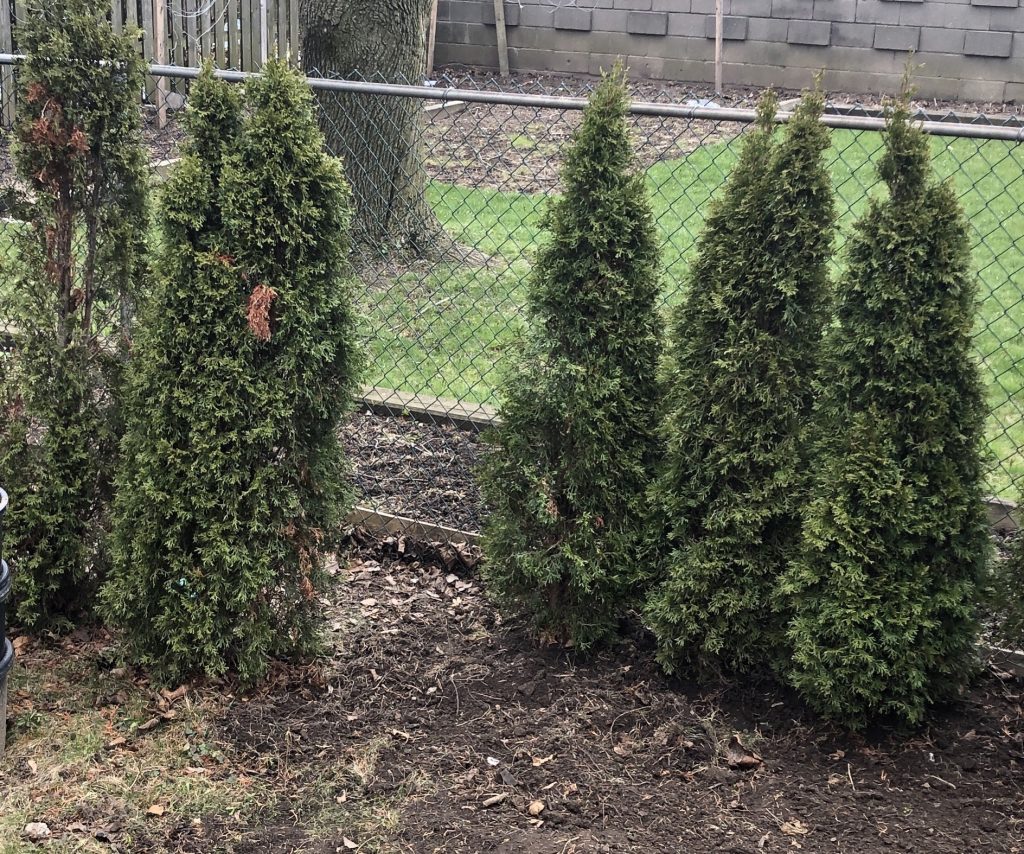
I have a row of emerald cedars in my background along the fence with my next door neighbor. I planted them a few years ago. They range from about 5-8 feet high. I planted them a bit far from the fence about 2.5 feet away, thinking they would really fill out. This hasn’t been the case and I want to move them closer to the fence so they don’t eat up so much room in my yard. My neighbor is a serious vegetable gardener and has a garden on the immediate other side of the fence. He uses a large machine tiller each spring and says if the cedars are too close the tiller will destroy some of the roots. I’m not sure if this is the case and even if it is, would that really kill the tree or just hinder its growth slightly. Interested to hear people’s thoughts. In the picture you can see some of the trees which are moved and ones that aren’t.
Hello and thank you for your question.
I think you have to weigh the pros and cons in this type of situation. If it is more important to plant the cedars closer to the fence to allow you to gain more room in your garden, then the probable slight chance of hindering the growth of your cedars is worth the risk of transplanting them. As you may know, the growth rate of Emerald cedars (Thuja occidentalis ‘Smaragd’) is quite slow so their lateral root system would not spread very fast and would only be slightly affected by the tilling of the soil by your neighbour. On a side note, this cultivar was developed in Denmark and the word ‘Smaragd’ actually means Emerald in Danish.
As indicated in a response to another question sent to the Toronto Master Gardeners, usually cedars of this height in a maintained hedge refrain from growing thicker lateral roots which would reduce the chance of spreading out into your neighbour’s garden. They tend to have more fibrous surface roots and some thicker roots going deeper. This is the norm but also depends on soil conditions.
Here is some general information on growing healthy cedars from two of our earlier posts:
Watering deeply and thoroughly (at least once or twice a week after planting), is key so that your cedars’ roots can take hold. This is much more effective than frequent spraying or light watering, and can be done easily by using a soaker hose along the base of the cedars for several hours to ensure that the moisture reaches into the roots of the plant. Watering should continue well into the autumn until the ground is frozen to maintain adequate moisture through the winter. Cold winter winds can desiccate the foliage – once the ground is frozen, your cedars cannot take up moisture to replace what is lost from their foliage.
Fertilizing the hedge with a 30-10-10 formulation three times in the growing season (May, June and July) is appropriate. It is very important to follow exactly the directions for applying fertilizers so that they are absorbed into the soil and are able to reach the plant’s roots. Don’t fertilize in late summer as the hedge needs to prepare to go dormant for the winter.
I wish you the best of luck with your transplanting!

